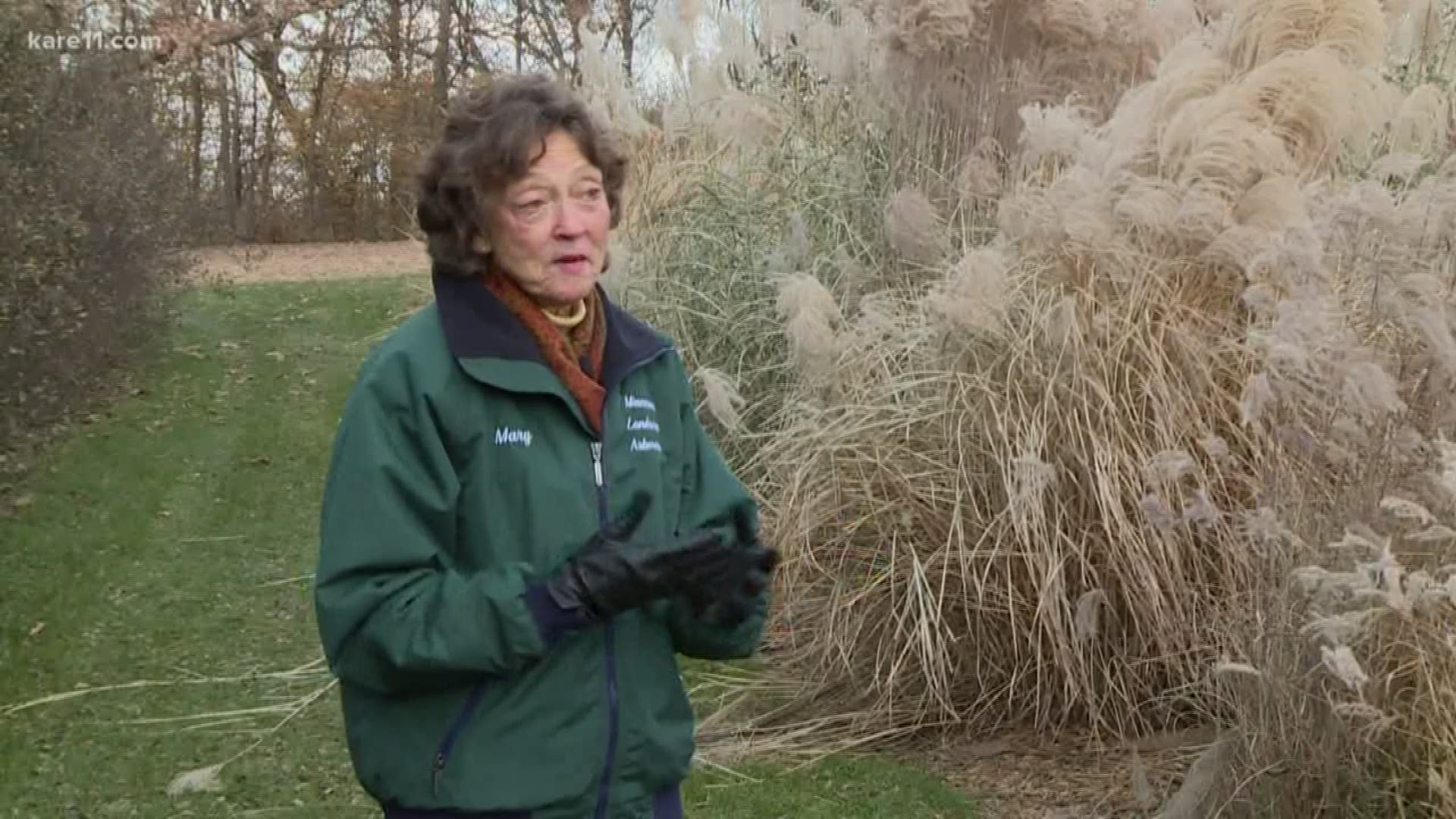We get our grass questions answered from Dr. Mary Meyer at the University of Minnesota Landscape Arboretum. Grasses really shine this time of year, but what can they offer a landscape that other plants and shrubs cannot?
"Well one of the great things about grasses is they have susurration, which is sound that the winds makes in grasses," she tells us. "That susurration is that great sound that many plants don't have."
"They're a great vertical element and they stay upright throughout the season."
What environmental benefits do grasses offer?
"Grasses have a lot of benefits, I have a long list," she laughs. "They provide organic matter to the soil. When the roots die in the soil they provide channel for water. And many pollinators like the native skipper butterflies feed exclusively on grasses."
What are your favorites?
"Little bluestem and prairie dropseed."
When should we cut them back?
She instructs us to leave them through the winter and cut them back early in the spring. That's the easiest time to do it and they overwinter better. Plus you get to enjoy their sight and sound throughout a whole other season.
Meyer says the number one question of all perennials is "what grasses grow in the shade?"
If you've been wondering that... there's a whole new exhibit at the Arb dedicated to shade-loving grasses, both native and non-native. A couple she suggests are Carex pensylvanica and northern sea oats.
RELATED: Grow with KARE: The best of 2019
RELATED: Grow with KARE: Colorful poinsettias

